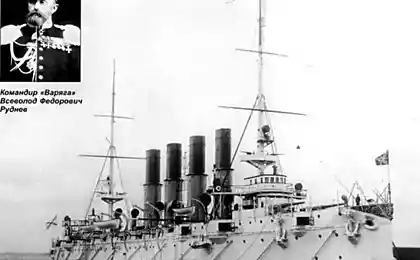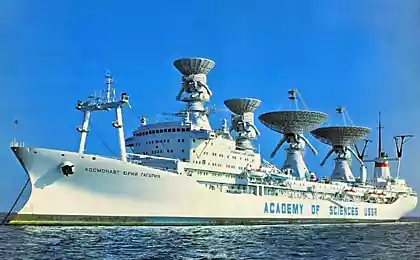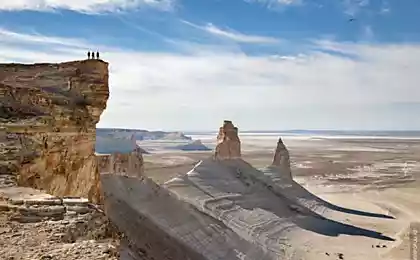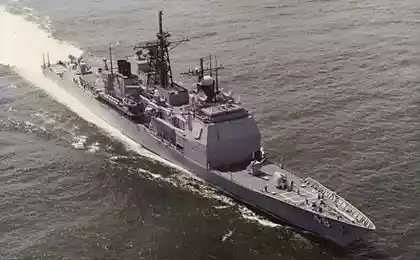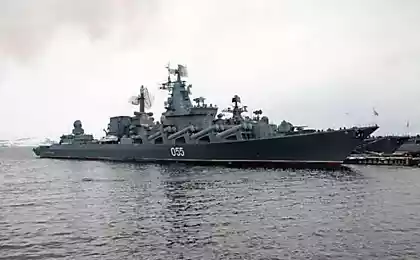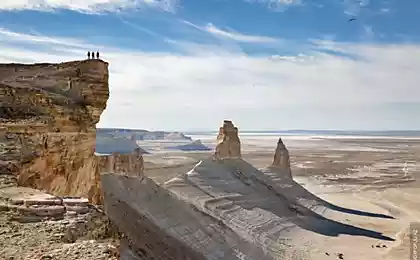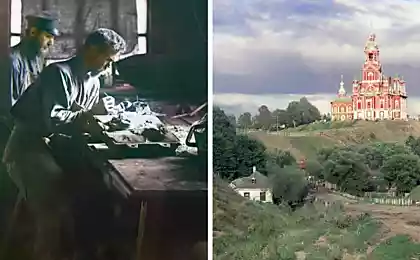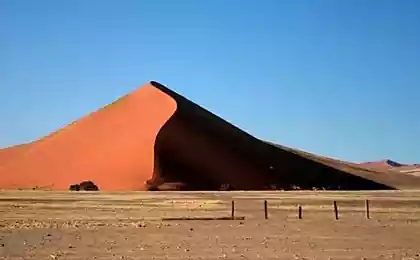921
Uzbekistan. The ships of the desert.
38 pictures + a bit of letters
Until the 1960s, the Aral Sea was the fourth lake in the world. Its waters were many fish on the banks of the working ports and factories, the people were employed in urban life went on.
Then everything changed. The sea began to dry up. I can not remember where proihodit similar. Comes to mind only the reverse process - the construction of the seas on the Volga and the flooded city - Mologa, Kalyazin, Vesyegonsk, Stavropol-on-Volga. In general, only the fact of leaving the sea is not alone.
Not in itself was a local. In Muinak where we are today, and we'll go, people were hoping to return the sea. Digging canals and building dikes. In the end just cried and begged not to leave the sea. But all was in vain. They say that in one night the sea went immediately to the 200 meters. Waking up, people just do not know his hometown.
Today - a former port Muinak. The remains of a former life.
source
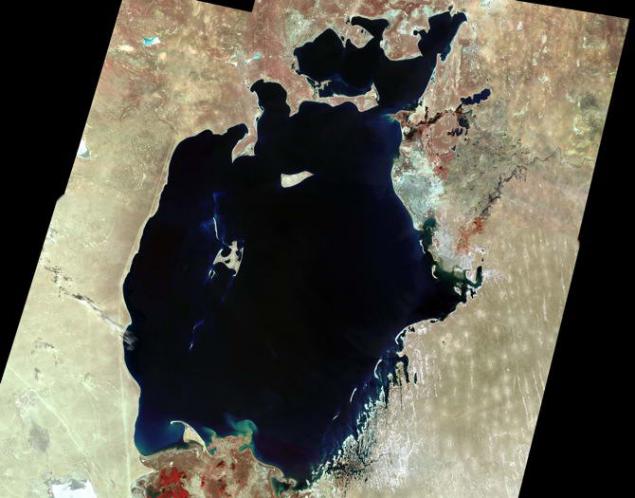
According to the hypothesis, the Aral Sea is only 10 thousand years. Active learning it began in the middle of the XIX century, with the arrival of the Russian Territory. Since then, the same being, and observation. During the entire observation period (1850-1960 years) fluctuations in the Aral Sea did not exceed 3 meters and there were only natural reasons. Ie until 1960 the Aral Sea remained quite stable.
And then - the beginning of the famous disaster. The Soviet Union needed cotton, for which the water of the Amu Darya take away the canals for irrigation, the water does not reach the mouth of the sea shallows. Topic known, dwell on it for a long time do not want to.
Interestingly another. Scientists say, for 10 thousand years of life, the sea changed its boundaries 9 times. According to unconfirmed hypotheses of water flows into the Caspian Sea. In general, the Aral shrank again overflowed. At the bottom of a dried-up pond today are evidence of these oscillations. It rests rosshey here thousands of years ago, trees or "Kerder" - the mausoleum of XI-XIV centuries, which has long been located at a depth of 20 meters.
It can be concluded that the current shallowing of the sea - the next stage, and cotton channels simply accelerated the process, and people do not fully blame. It may even be necessary to wait for the return of the sea. One thing is clear for sure: even if this happens, we will not find you. But the fact remains.
Whatever it was, let's look at a modern port Muinak, or rather that is left of it.
And a few pictures of me level Photo NASA. The Aral Sea in 1970. Water still a lot, but the sea is already starting to shallow
At the end of the 1980 sea rzdelilos into two parts. The former northern part became known as the Small Sea (Kazakhstan), south - Large (Uzbekistan). Later Big Sea is divided into West and East, and the island of the Renaissance, which was a Soviet test site for testing bacteriological weapons becomes the first peninsula and then just land. Photo NASA. 2006. By this time, it took 85% of the former volume
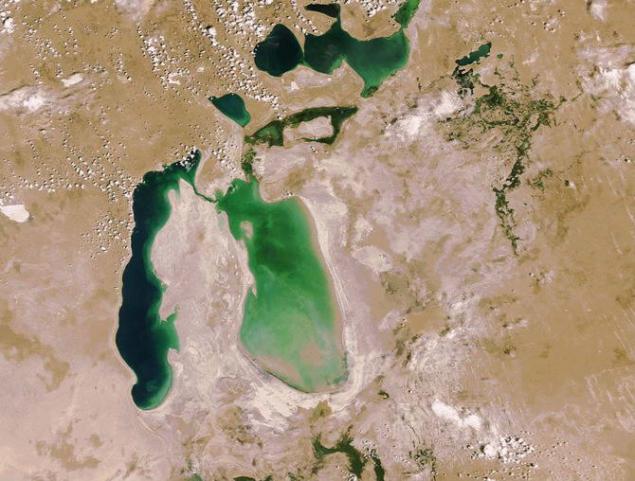
Photo NASA. year 2009. Sea shoal very quickly. Almost everything has dried up over the last 10 years
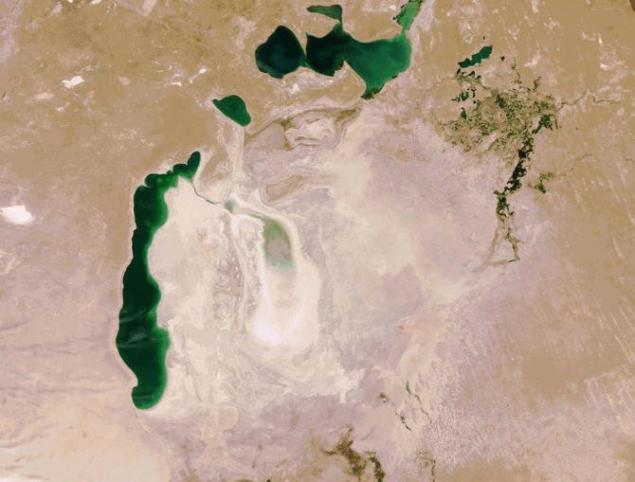
Unlike Uzbekistan, Kazakhstan has taken a number of measures to save his part of the sea. The dam was built, bringing the Small Sea began to fill, there appeared fish. 1. On the former high sea is a monument. Date updated, but the contours of the Aral Sea has long been decreased
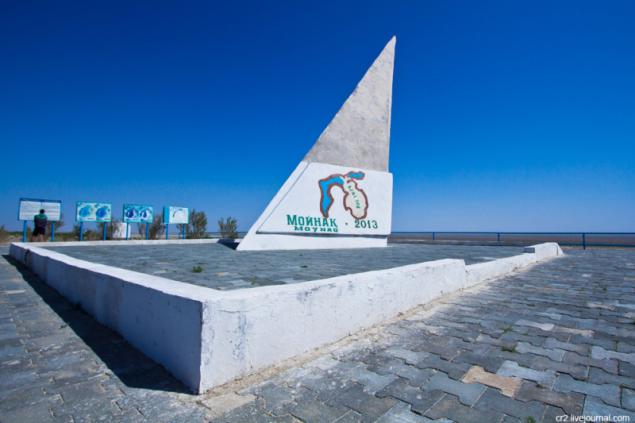
On the other side - the sea of 1960, before the rapid drying. At that moment, when we were drawing in the shadows. Symbolically. Shadow seemed to show that the best years are long gone. Over the fence open, and where the sands - was once water
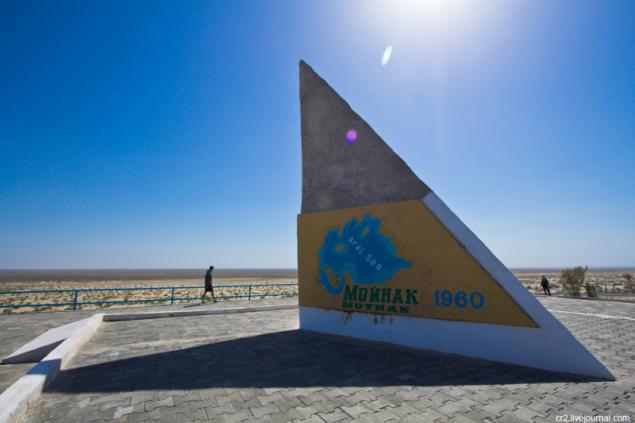
Ships. All land to the horizon in the 1960s served as the bottom. That distance may be initially mistaken for water, in fact, salt
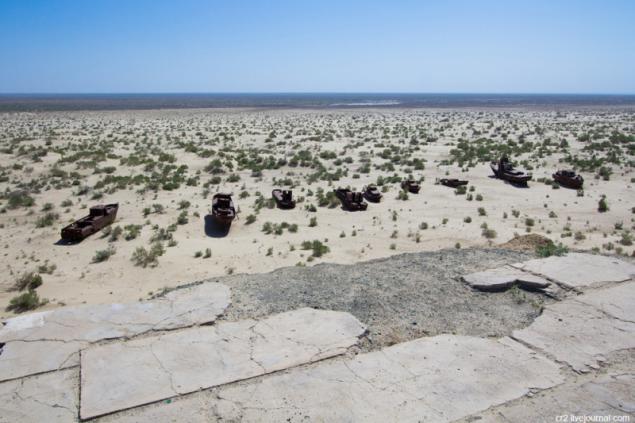
Ships were so many, many now cut into scrap metal. According to rumors, officially remaining will not touch, will remain as a memory, but will, in fact - is unknown
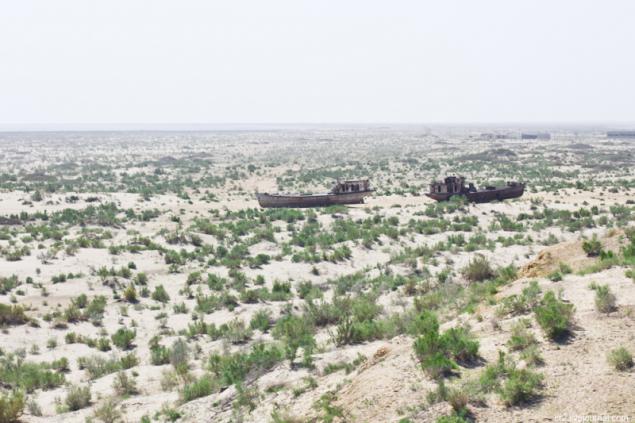
The status of all ships mean
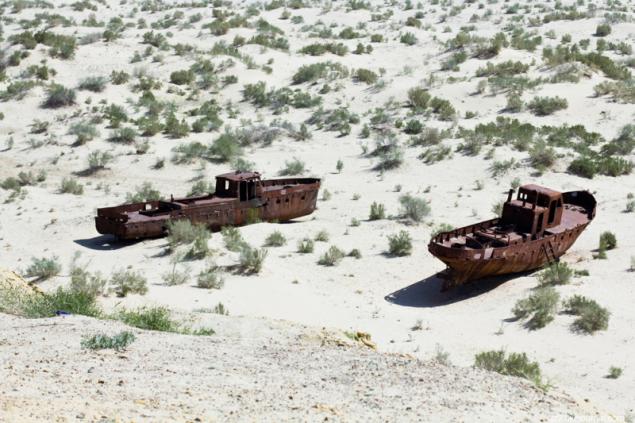
But somewhere along the sides of the tire preserved even
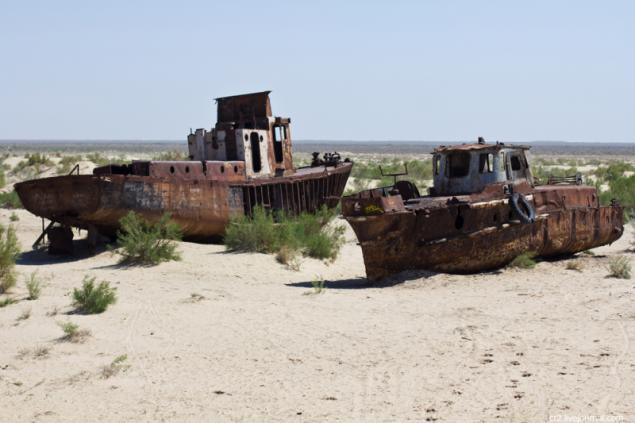
We go down from the already familiar to us down the high bank. Former edge. Imagine the water here. The heat, the noise of the waves, a great sandy bottom. Not that sucking mud in the place of our overnight stay on the coast. Beauty!

Beauty went very quickly. Back in the mid-1990s, the sea was at a distance of 45 km from the Muinak, and in the early 2000s had gone 100 km
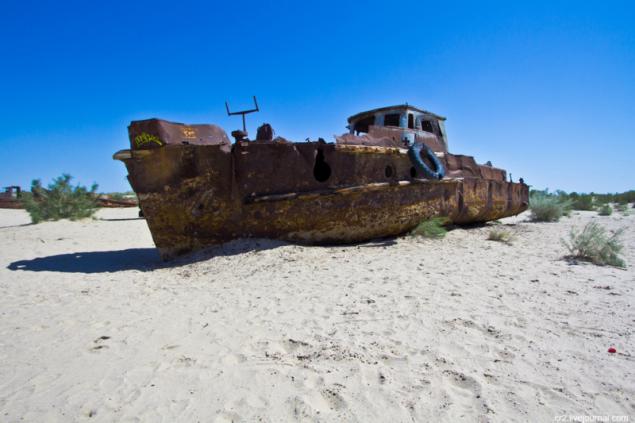
Now, from here to the water 180 km - the distance from Moscow to Ryazan

Due to the sharp increase of salinity, all flora and fauna in the Great Sea died. Waters lost commercial value
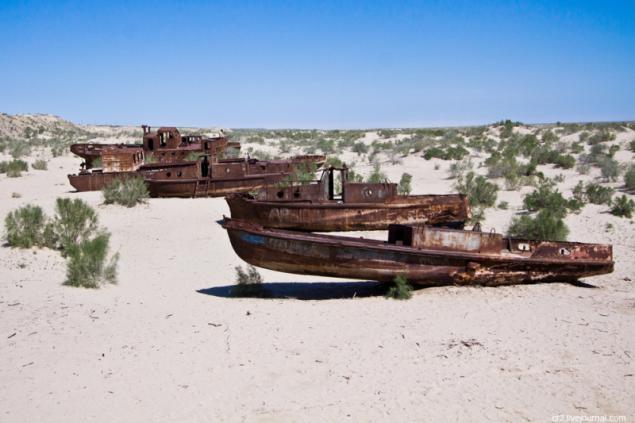
Cow?
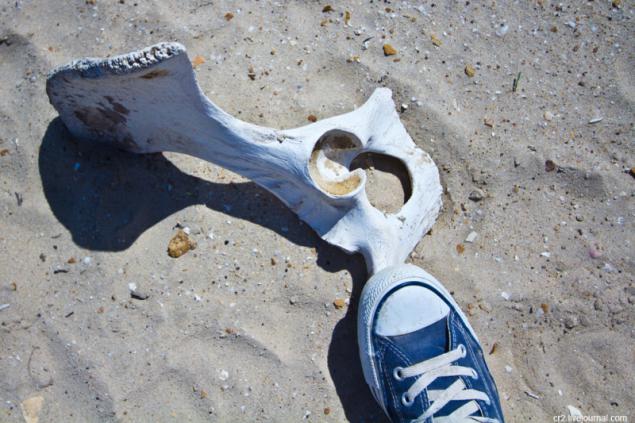
15.
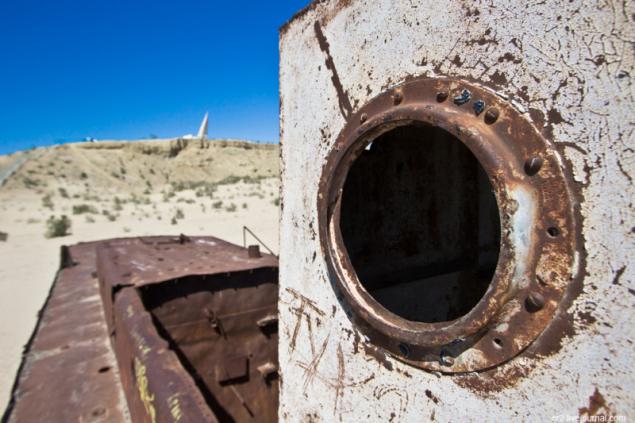
Holds slowly fills with sand
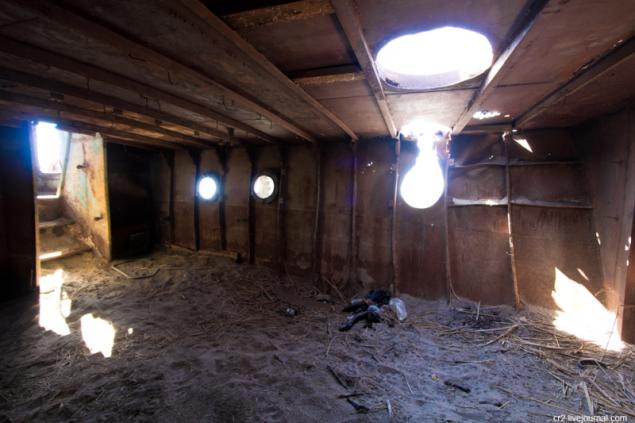
The fate of the Muinak sad. Before shallowing sea vodilos a lot of fish, the main enterprise in the city was a fish cannery. With the retreat of the sea in the 1980s, not to close the plant, frozen fish brought here from Russia
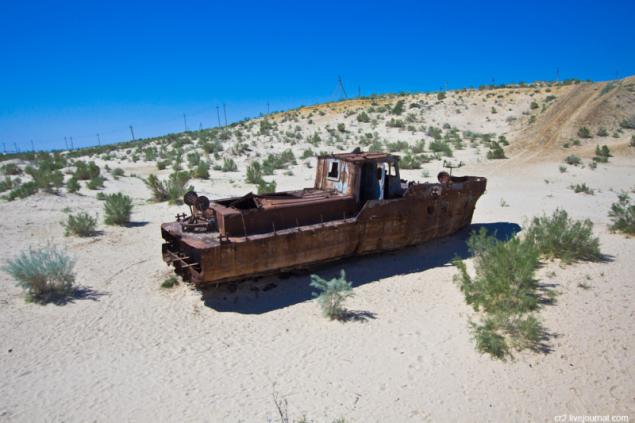
The case turned unprofitable, in the 1990 cannery closed. Unemployment began, residents began to leave their homes and go to the neighboring town
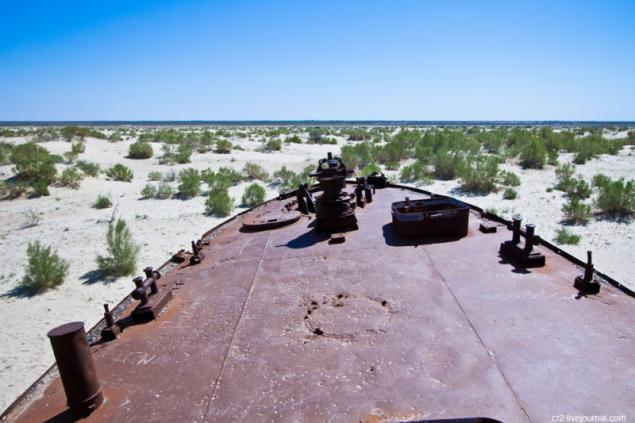
In place of the waves and the storm came dusty salt storms. Pesticides and chemicals washed from cotton fields in the Amu Darya River and the sea, are now carried by wind for hundreds of kilometers. Many local residents began to ache, increased mortality. Often the fixed eye and skin diseases, lesions of the gastrointestinal tract

The area began to turn into a desert, and many springs have become unsuitable for drinking because of the high content of the same pesticide
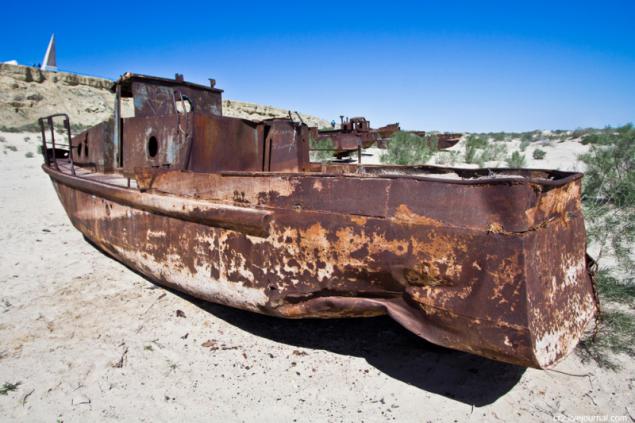
The port has become a graveyard of ships
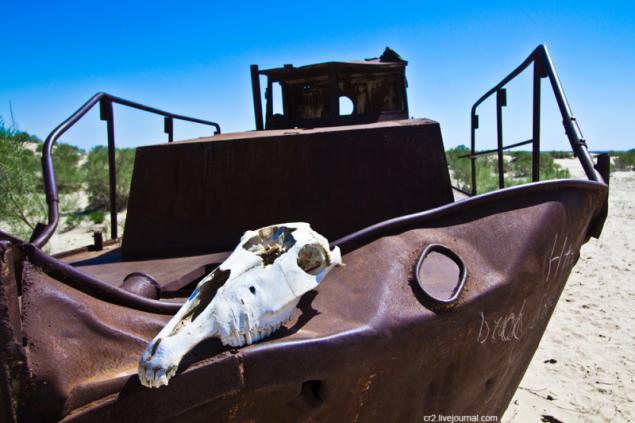
Or the point where many zaezhzayut traveling to Uzbekistan. Our team - is no exception
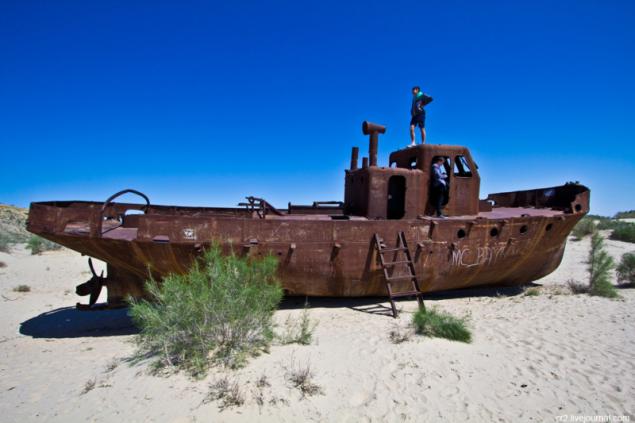
From buildings of the port, according to local, not a trace remains. Also dismantled all coastal structures
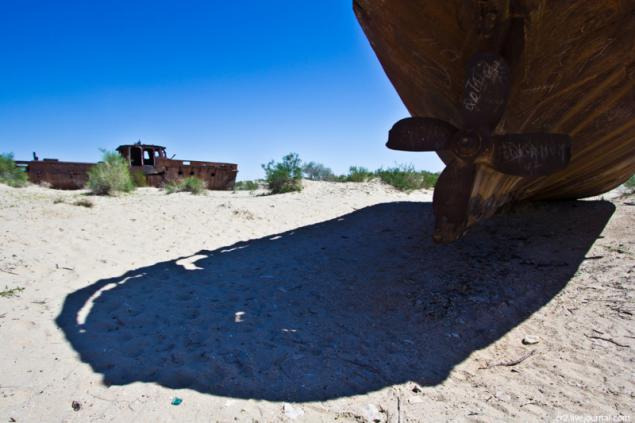
Tank)
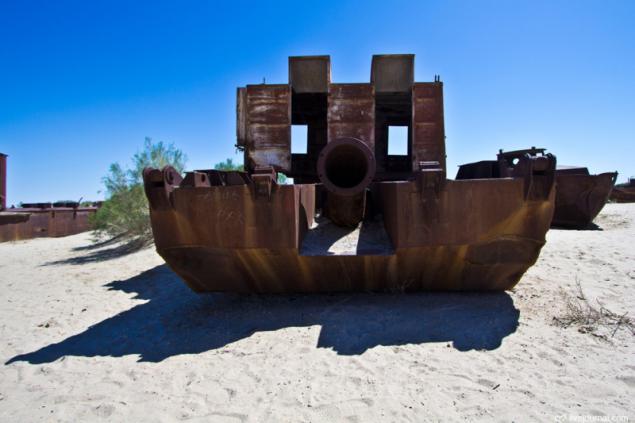
Drying up the sea affected the climate of the region. Summer has become more dry and hot, the winter - a cold and prolonged

Many experts still see a solution to the problem of the Aral Sea only in the diversion of Siberian rivers to the south. But it is expensive, and in my opinion quite utopian and idiotic. Last active supporter it was a former Moscow Mayor Luzhkov
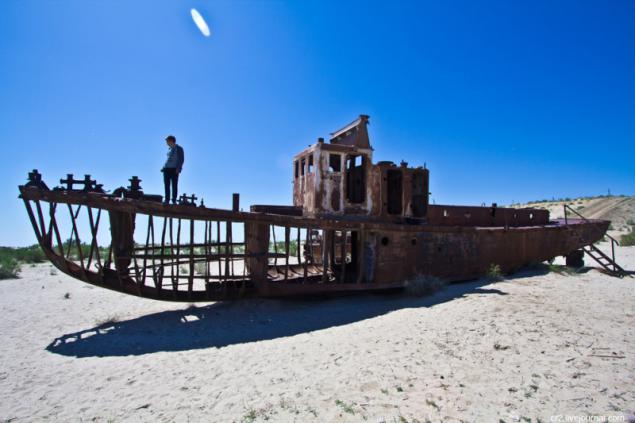
Even if that happens, according to scientists, marine bowl filled with only 200 years
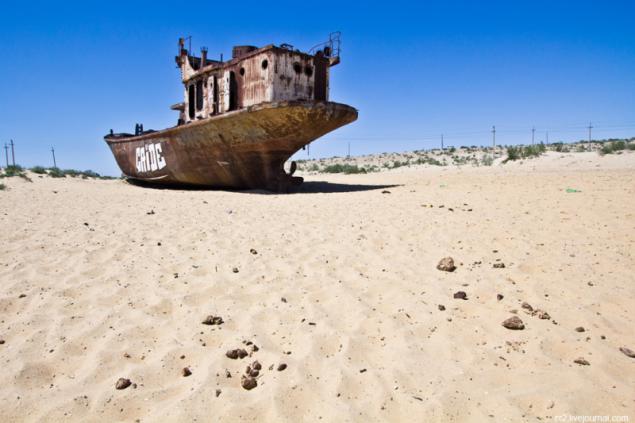
Now a bit of a rest from the text. Some pictures without comment. Everything is clear and so

29.
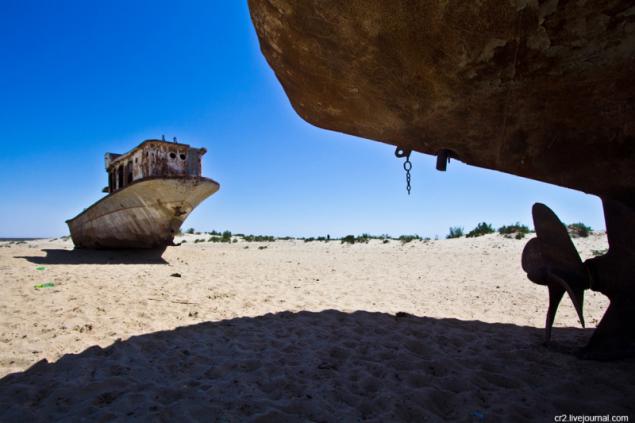
30.
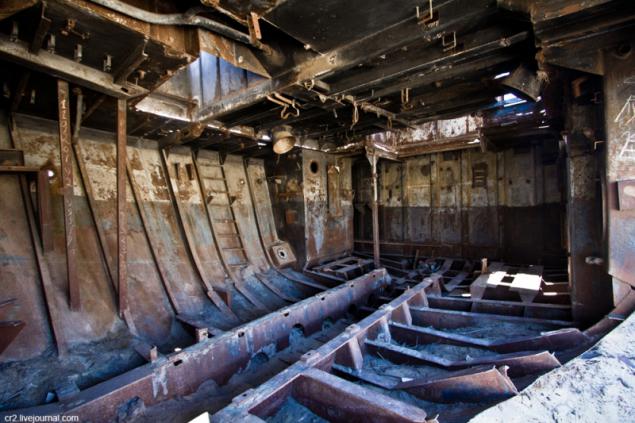
31.
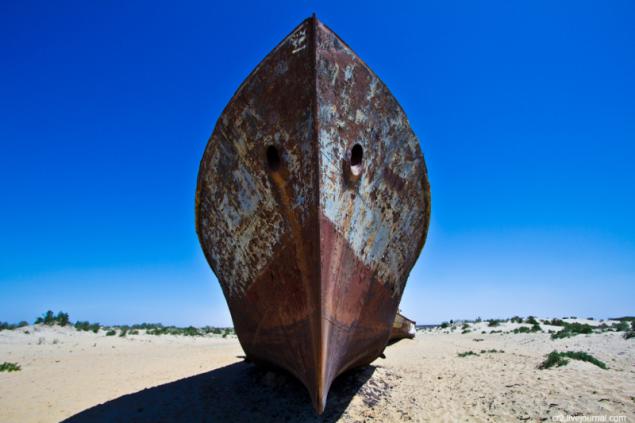
32.
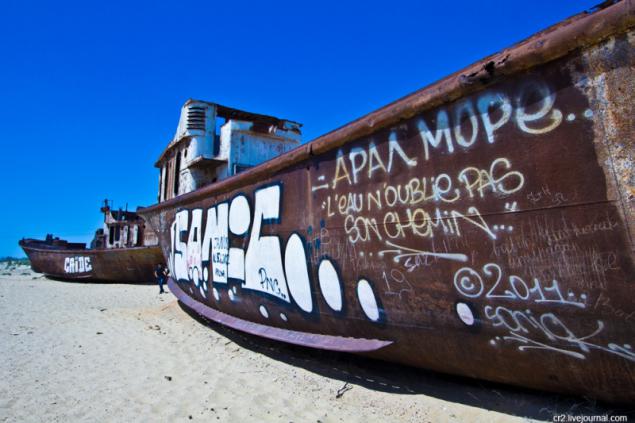
33.
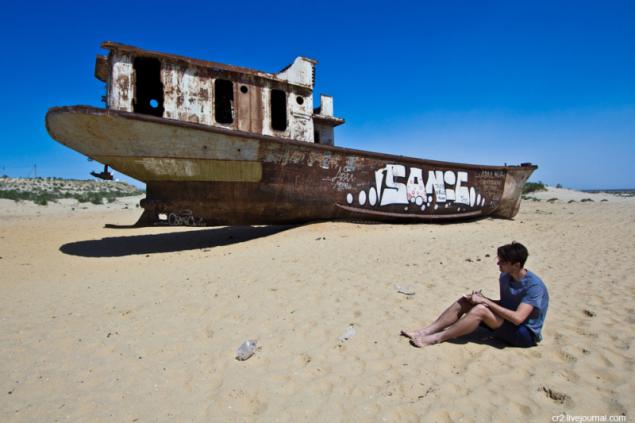
About Aral not forget

But the sailors changed the local youth
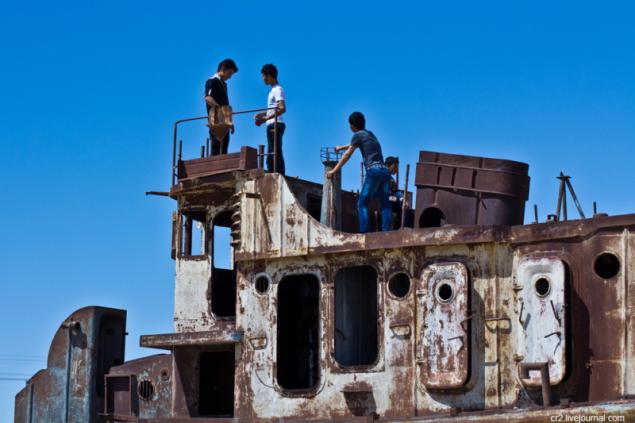
In Russian do not understand. Judging by the numerous filming on the background korbaley for children is as exotic

We stayed in a former port a few hours, but as began to leave, the weather changed dramatically. Started dusty salt storm
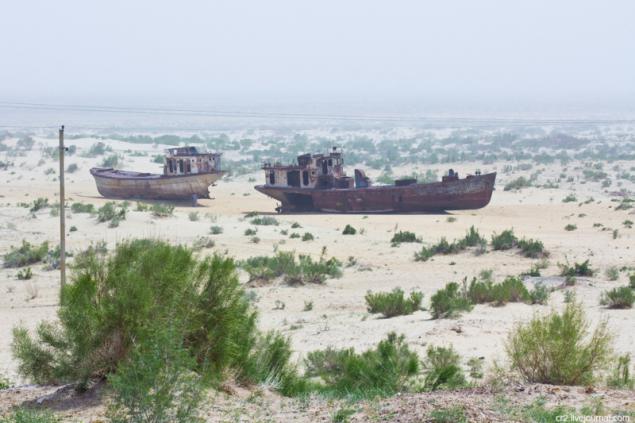
The final
In such weather it would have looked very interesting Muinak the city, but our driver refused to stop there. At the suggestion of a walk around the city, for some reason he got nervous, he referred to some police ban on a long stop and stay in the Muinak, and gave on gases out of this damned place of destiny. According to forecasts Big Sea will disappear completely by 2020.
Thus, in Uzbekistan there will be no sea at all, and the once fourth lake on the planet will be only the former northern part of Kazakhstan - the Small Sea.

Source:
Until the 1960s, the Aral Sea was the fourth lake in the world. Its waters were many fish on the banks of the working ports and factories, the people were employed in urban life went on.
Then everything changed. The sea began to dry up. I can not remember where proihodit similar. Comes to mind only the reverse process - the construction of the seas on the Volga and the flooded city - Mologa, Kalyazin, Vesyegonsk, Stavropol-on-Volga. In general, only the fact of leaving the sea is not alone.
Not in itself was a local. In Muinak where we are today, and we'll go, people were hoping to return the sea. Digging canals and building dikes. In the end just cried and begged not to leave the sea. But all was in vain. They say that in one night the sea went immediately to the 200 meters. Waking up, people just do not know his hometown.
Today - a former port Muinak. The remains of a former life.
source

According to the hypothesis, the Aral Sea is only 10 thousand years. Active learning it began in the middle of the XIX century, with the arrival of the Russian Territory. Since then, the same being, and observation. During the entire observation period (1850-1960 years) fluctuations in the Aral Sea did not exceed 3 meters and there were only natural reasons. Ie until 1960 the Aral Sea remained quite stable.
And then - the beginning of the famous disaster. The Soviet Union needed cotton, for which the water of the Amu Darya take away the canals for irrigation, the water does not reach the mouth of the sea shallows. Topic known, dwell on it for a long time do not want to.
Interestingly another. Scientists say, for 10 thousand years of life, the sea changed its boundaries 9 times. According to unconfirmed hypotheses of water flows into the Caspian Sea. In general, the Aral shrank again overflowed. At the bottom of a dried-up pond today are evidence of these oscillations. It rests rosshey here thousands of years ago, trees or "Kerder" - the mausoleum of XI-XIV centuries, which has long been located at a depth of 20 meters.
It can be concluded that the current shallowing of the sea - the next stage, and cotton channels simply accelerated the process, and people do not fully blame. It may even be necessary to wait for the return of the sea. One thing is clear for sure: even if this happens, we will not find you. But the fact remains.
Whatever it was, let's look at a modern port Muinak, or rather that is left of it.
And a few pictures of me level Photo NASA. The Aral Sea in 1970. Water still a lot, but the sea is already starting to shallow
At the end of the 1980 sea rzdelilos into two parts. The former northern part became known as the Small Sea (Kazakhstan), south - Large (Uzbekistan). Later Big Sea is divided into West and East, and the island of the Renaissance, which was a Soviet test site for testing bacteriological weapons becomes the first peninsula and then just land. Photo NASA. 2006. By this time, it took 85% of the former volume

Photo NASA. year 2009. Sea shoal very quickly. Almost everything has dried up over the last 10 years

Unlike Uzbekistan, Kazakhstan has taken a number of measures to save his part of the sea. The dam was built, bringing the Small Sea began to fill, there appeared fish. 1. On the former high sea is a monument. Date updated, but the contours of the Aral Sea has long been decreased

On the other side - the sea of 1960, before the rapid drying. At that moment, when we were drawing in the shadows. Symbolically. Shadow seemed to show that the best years are long gone. Over the fence open, and where the sands - was once water

Ships. All land to the horizon in the 1960s served as the bottom. That distance may be initially mistaken for water, in fact, salt

Ships were so many, many now cut into scrap metal. According to rumors, officially remaining will not touch, will remain as a memory, but will, in fact - is unknown

The status of all ships mean

But somewhere along the sides of the tire preserved even

We go down from the already familiar to us down the high bank. Former edge. Imagine the water here. The heat, the noise of the waves, a great sandy bottom. Not that sucking mud in the place of our overnight stay on the coast. Beauty!

Beauty went very quickly. Back in the mid-1990s, the sea was at a distance of 45 km from the Muinak, and in the early 2000s had gone 100 km

Now, from here to the water 180 km - the distance from Moscow to Ryazan

Due to the sharp increase of salinity, all flora and fauna in the Great Sea died. Waters lost commercial value

Cow?

15.

Holds slowly fills with sand

The fate of the Muinak sad. Before shallowing sea vodilos a lot of fish, the main enterprise in the city was a fish cannery. With the retreat of the sea in the 1980s, not to close the plant, frozen fish brought here from Russia

The case turned unprofitable, in the 1990 cannery closed. Unemployment began, residents began to leave their homes and go to the neighboring town

In place of the waves and the storm came dusty salt storms. Pesticides and chemicals washed from cotton fields in the Amu Darya River and the sea, are now carried by wind for hundreds of kilometers. Many local residents began to ache, increased mortality. Often the fixed eye and skin diseases, lesions of the gastrointestinal tract

The area began to turn into a desert, and many springs have become unsuitable for drinking because of the high content of the same pesticide

The port has become a graveyard of ships

Or the point where many zaezhzayut traveling to Uzbekistan. Our team - is no exception

From buildings of the port, according to local, not a trace remains. Also dismantled all coastal structures

Tank)

Drying up the sea affected the climate of the region. Summer has become more dry and hot, the winter - a cold and prolonged

Many experts still see a solution to the problem of the Aral Sea only in the diversion of Siberian rivers to the south. But it is expensive, and in my opinion quite utopian and idiotic. Last active supporter it was a former Moscow Mayor Luzhkov

Even if that happens, according to scientists, marine bowl filled with only 200 years

Now a bit of a rest from the text. Some pictures without comment. Everything is clear and so

29.

30.

31.

32.

33.

About Aral not forget

But the sailors changed the local youth

In Russian do not understand. Judging by the numerous filming on the background korbaley for children is as exotic

We stayed in a former port a few hours, but as began to leave, the weather changed dramatically. Started dusty salt storm

The final
In such weather it would have looked very interesting Muinak the city, but our driver refused to stop there. At the suggestion of a walk around the city, for some reason he got nervous, he referred to some police ban on a long stop and stay in the Muinak, and gave on gases out of this damned place of destiny. According to forecasts Big Sea will disappear completely by 2020.
Thus, in Uzbekistan there will be no sea at all, and the once fourth lake on the planet will be only the former northern part of Kazakhstan - the Small Sea.

Source:



